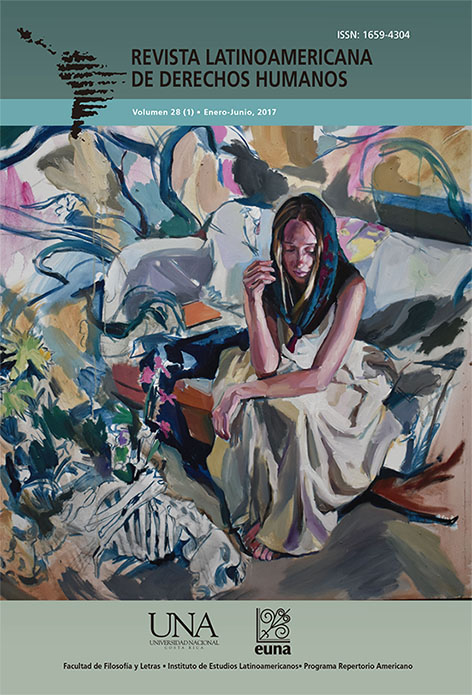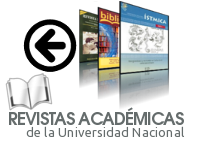Accessibility to ICTs in Costa Rica: A Disruptive Change in the Mind of the Costa Rican Society
DOI:
https://doi.org/10.15359/http://dx.doi.org/10.15359/rldh.28-1.7Keywords:
ICTs, disability, web and universal accessibility, Costa RicaAbstract
The present paper analyzes the definition of the concept of universal accessibility, considering the current state of accessibility in Costa Rica, especially in the field of technology. It aims to raise awareness and provide guidance to the public reader, pointing out some of the myths present within the definition of accessibility, taking into account different perspectives from other studies, and exemplifying situations related to web accessibility, mainly. We analyze the data generated by the National Statistics and Census Institute (INEC) on the population with disabilities in Costa Rica. This analysis is done through statistical information provided by the past censuses carried out during the decades of the present century, considering the importance of improving ICTs for people who have some type of disability, caused by nature or by time. The paper reviews different projects that, at present, are being promoted in ICTs and are considered important advances to improve the conditions of people with disabilities. It promotes the inherent need to work on the development of ICTs in Costa Rica from different frameworks. In the political and legal frameworks, it identifies the need to extend the rules promoting the laws in favor of disability in the country. In conclusion, the article analyzes that Costa Rica could become one of the first countries in Central America and the Caribbean covering the needs of people with disabilities, through the strengthening and recognition of ICTs that give added value to build a universal accessibility.
References
AFP. (2015) Accesibilidad física y cibernética para ciegos gana espacio en agenda latinoamericana. Recuperado de http://www.nacion.com/tecnologia/web/Accesibilidad-cibernetica-espacio-agenda-latinoamericana_0_1519248152.html.
AGESIC. (s. f.) Capítulo III. Accesibilidad Web. Recuperado de http://agesic.gub.uy/innovaportal/file/549/1/Capitulo_3_Accesibilidad_v1_0.pdf
ASAMBLEA LEGISLATIVA DE LA REPUBLICA DE COSTA RICA. (1996). Ley N.o 7600. Igualdad De Oportunidades Para Las Personas Con Discapacidad. Costa Rica: Autor.
Carreño, I. (2016). Colombia, Costa Rica y Perú a través de sus políticas de accesibilidad. Recuperado de http://www.mediatelecom.com.mx/~mediacom/index.php/agencia-informativa/noticias/item/125248-colombia,-costa-rica-y-perú-a-través-de-sus-políticas-de-accesibilidad.
CEPAL. (2016). Tecnologías de información y comunicación para la inclusión y el empoderamiento de las personas con discapacidad en América Latina y el Caribe. Presentación PowerPoint. Diapositivas 14 - 18.
Chacón, K. (2015). FONATEL aspira a conectividad total de Costa Rica en el 2017. Recuperado de http://www.elfinancierocr.com/tecnologia/Fonatel-conectividad-aldea_digital-San_Carlos-Internet_0_813518652.html
Chacón, K. (2016). ¿Es posible la tecnología accesible para todos los estratos sociales? Recuperado de http://www.elfinancierocr.com/tecnologia/Tecnologia-accesible-estratos-sociales_0_899910001.html
FONATEL. (2016). Empoderar para el desarrollo: Proyecto de servicio universal más ambicioso (100% territorios). Presentación PowerPoint. Diapositivas 5 - 6.
INEC. (2011). Población con discapacidad. Recuperado de http://www.inec.go.cr/social/poblacion-con-discapacidad
Ministerio de Salud (MINSA). (2004). La discapacidad en Costa Rica: Situación actual y perspectivas. Recuperado de http://www.bvs.sa.cr/php/situacion/discapacidad.pdf
Mitchell, J. (s. f.). What Programming Language Is Primarily Used on the Web?. Recuperado de http://smallbusiness.chron.com/programming-language-primarily-used-web-26635.html
Molina, K. y Cuevas, F. (2014). TIC y educación de personas con discapacidad en Costa Rica. Recuperado de www.oei.es/historico/congreso2014/memoriactei/1202.pdf
Mora, K. (2016). Traductor digital de LESCO avanza y alcanza la inclusión de 1284 glosas Recuperado de https://www.tec.ac.cr/hoyeneltec/2016/07/26/traductor-digital-lesco-avanza-alcanza-inclusion-1284-glosas
Programa Sociedad de la Información y el conocimiento (PROSIC) – Universidad de Costa Rica. (UCR) (2011). TIC y personas con discapacidad en Costa Rica. Capítulo 9. Recuperado de http://www.prosic.ucr.ac.cr/sites/default/files/recursos/informe_2011_cap9.pdf
RAE. (2016). Definición de concientizar - concienciar. Recuperado de 2017 de http://dle.rae.es/?id=A8mrPcH
RAE. (2016). Definición de sensibilizar. Recuperado de http://dle.rae.es/?id=XaGpWYI
Roig, Rafael de Asís. (2013). Sobre la accesibilidad universal. Recuperado de www.tiempodelosderechos.es/es/biblioteca/.../55-sobre-la-accesibilidad-universal.html.
SUTEL. (s. f.). Reglamento de Acceso Universal, Servicio Universal y Solidaridad. Recuperado de https://sutel.go.cr/sites/default/files/normativas/reglamento_de_acceso_universal_servicio_universal_y_solidaridad.pdf
Universidad de la Rioja, DIALNET. (s. f.) Accesibilidad Web. Recuperado de https://dialnet.unirioja.es/info/accesibilidad
Vargas, M. (2016). Población sorda de Costa Rica tendrá canal Lesco en la web. Recuperado de http://www.nacion.com/tecnologia/apps/Poblacion-Costa-Rica-canal-Lesco_0_1580041996.html
W3C. (2008). Pautas de accesibilidad para el contenido web (WCAG) 2.0. Recuperado de http://www.sidar.org/traducciones/wcag20/es/
Downloads
Published
How to Cite
Issue
Section
License
El material que se publica en esta Revista está bajo una licencia “Creative Commons” 3.0 Costa Rica (CC, Reconocimiento-NoComercial-SinObraDerivada 3.0 Costa Rica (CC BY-NC-ND 3.0 CR) . Esto significa que el material publicado en la revista se puede compartir (copiar y distribuir) en cualquier medio o formato considerando que se debe reconocer de forma adecuada la autoría del material y la fuente, no puede utilizarse con fines comerciales y no se aceptan las obras derivadas (remezclar, transformar o crear a partir del material).








